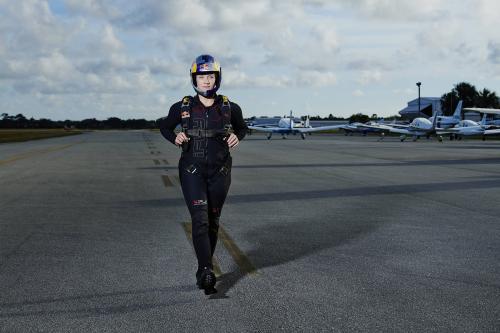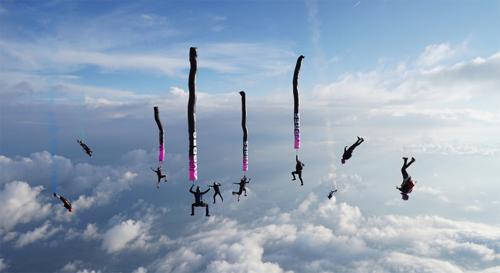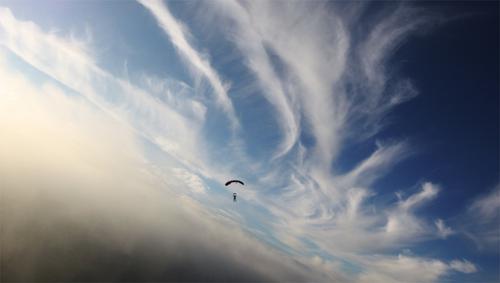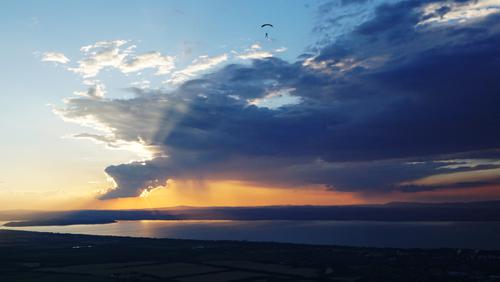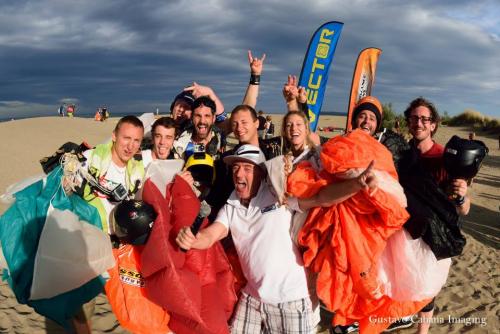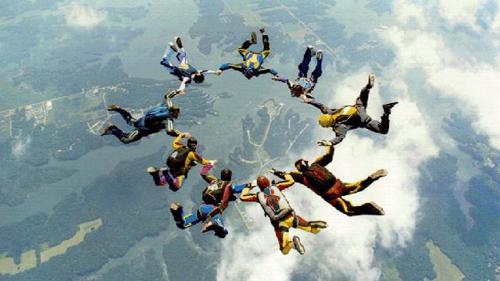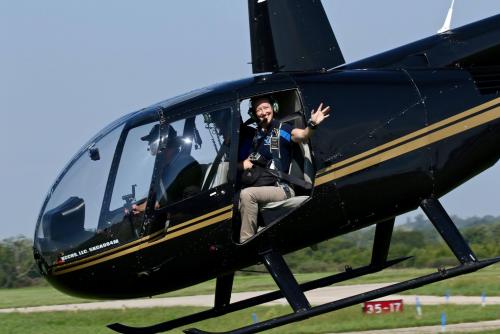Lessons Learned with Amy Chmelecki
Images by Amy Chmelecki
When we catch up with Amy Chmelecki, she’s getting ready for what is, for her, a pretty normal travel schedule. From her Eloy home base, she’s heading out for one week on the coast of Barcelona, and then two weeks in Portugal’s Algarve, and then one week at a pop-up drop zone in Sicily.
“I’m not sure of the details of where I’m going to be off the top of my head,” she laughs, “mostly because I couldn’t pronounce any of the names.”
At this stage of the game, Amy’s own legendary last name is the one that needs the most emphatic pronunciation. She’s at the top of her game, after all: a flagship athlete with Red Bull, and certainly one of the most sought-after skydivers in the world. With head-to-toe branding, of course, comes great responsibility. Amy is no stranger to high-profile skydiving--she’s been a leading athlete in the sport for many years. Even so, her career’s constant up-level trajectory wouldn’t be a great fit for just anyone.
“I’ve debated the ‘sacrifice’ question on a philosophical level with some of my friends,” Amy muses. “Sure, there’s a level of financial insecurity involved in this kind of career, but I don’t mind it. You have to be comfortable with the constant unknowns and have faith that it is going to work out. I get it that some people wouldn’t be comfortable with that, but speaking for myself, I don’t feel like I’ve sacrificed anything. Like having children, for instance. A lifestyle like this would be difficult with children, but I’ve never really wanted them--so it just fit.”
It doesn’t hurt that Amy has had some pretty awesome female mentors along the way.
“I actually talked to [Rigging Innovations Co-Owner] Brenda [Reid] quite a bit about this,” she continues. “I don’t know if she remembers those conversations, but they meant a lot to me when I was starting off in my career. The ‘kids’ question was something that I was nervous about, because there was this fear in the back of my head, like, am I going to regret my choice? Brenda has never had children, and I sat her down and talked to her about it extensively. She really filled me with a calm that I needed. Here was this extremely successful woman in the sport of skydiving. Since then, she has been put in the Skydiving Hall of Fame. She and [husband and Rigging Innovations Co-Owner] Sandy [Reid] have this beautiful marriage; life; career. And she has zero regrets about not having children. It was nice to hear that from someone that I admire so much.”
“People still tell me I’m going to change my mind,” she laughs. “It’s happening less and less, but it still happens. The other day in Atlanta, a taxi cab driver told me I’d want kids one day, just wait and see. I’m like, dude, I’m 41. I’ve been all around the world this month. He had no idea what he was talking about. It was funny.”
As any woman in airsports knows all too well, that cab driver’s oafish mansplain certainly doesn’t exist in a vacuum. Even for us girls in the rank-and-file, misconceptions abound. Amy, however, gets the rarified opportunity to blow them to bits. For instance: recently, Amy was hearing a murmur in the press bemoaning the fact that Red Bull only hires teenage girls to be its star athletes.
“So then Red Bull puts out this video on Women’s Day,” she grins. “And I was, like, hey! Guess what! I’m in that video, and I’m 40. I like representing this new part of me, being a woman in her 40s and still an extreme sport athlete and still getting better, and evolving, and doing more and radder things. Sometimes, like everybody, I get a little bit of an impostor syndrome--but I’m really proud of that video and what it meant for females. This is really still happening. I’m still doing this. This is possible.”
The idea of “possibility” is one that Amy gets to play with quite a lot in her daily life as a top-shelf airsports performer. If you’ve seen any of the jumps she does in that shiny silver helmet with the bull on it, you know just how far she (and the rest of the team) are able to push possibility on any given day. I’m sure we can all agree that it’s inspiring for a tidy stack of reasons.
That said: Not all impossible feats are what they seem. For instance: Most people probably assume that the hardest demo Amy has ever done was the landmark wingsuit flight over the New York City skyline. Surprisingly, Amy insists that it wasn’t.
“Honestly, it was relatively easy,” she insists. “There were no obstacles on the entry to the barge, first of all. We had space all around. We could approach from any direction, so we were able to go favorably into the wind.”
“There was a moment when I was coming in for the landing,” she adds, “where I thought I was going to go a little long. I just let my wingsuit fall from up on my chest down on my legs. In hindsight, I was okay already, but that little bit of added drag slowed me down just a touch. That was easy to manage. There was lots of room for forgiveness on that one.”
It is not, as you might imagine, always that way.
“Compare that with some of the other demos we do,” she says, “where the only possible approach is to, for instance, make a right-hand 180, get close to something in the turn, avoid the crowd lined up all along one side and slip in somewhere. Those are a lot harder, even if the landing area might appear to look a lot bigger. Or, of course, a stadium demo.”
And what about Amy’s dream demo? If “possibility” didn’t have to figure in anywhere? Her answer comes in record time.
“I’d jump off a rocket,” she laughs. “No one has done that, have they? I should do a two-way with Jeffro out of a rocket.” She pauses to think. “I wonder if Elon Musk drinks Red Bull? He must. It says he sleeps only 4 to 5 hours a night. There has to be something keeping him up. I’m sure we could get him involved. Anyway. who doesn’t want to go to Mars?”
“Seriously, though,” she leans in, “for me at this point it’s mostly about continuing to do what I’m doing--and taking care of myself more, because as you get into your 40s you have to make changes physically, and you have to work harder at being able to keep up with this type of lifestyle. My goals are to keep this sustainable for as long as I possibly can. To me, that means caring for myself physically and emotionally, and just continuing to do the hard work and evolving as a sponsored athlete.”
Wise words, indeed. We wanted to know: From all that wisdom, what would 40-year-old Amy have to say to 20-year-old Amy if 40-year-old Amy walked into the Bent Prop on her kid counterpart’s very first shift?
“Buy bitcoin,” she deadpans. “Okay, right. If I could go back with the knowledge and the experience and the brain that I have now, I would nurture a plan B along the way more. I would save money earlier; budget a little bit more wisely; invest. Now: The reason I say ‘with the mind I have now’ is that, honestly, I wasn’t capable of that kind of thing in my early 20s. Living this lifestyle, that’s one thing. Harnessing and nurturing a Plan B as well as saving money along the way? That’s something else entirely. When you’re younger, you’re thinking, ‘what if I die tomorrow?’ Then you get to a point where you’re, like, ‘what I live until my 90s?’ Living is way harder.”
Anyway, with this kinda life--why would Amy want to do anything differently? In all honesty: she doesn’t.
“Even with my own advice,” she chuckles, “I would probably do everything the same.”
Good choice, Amy.
By nettenette, in General,

